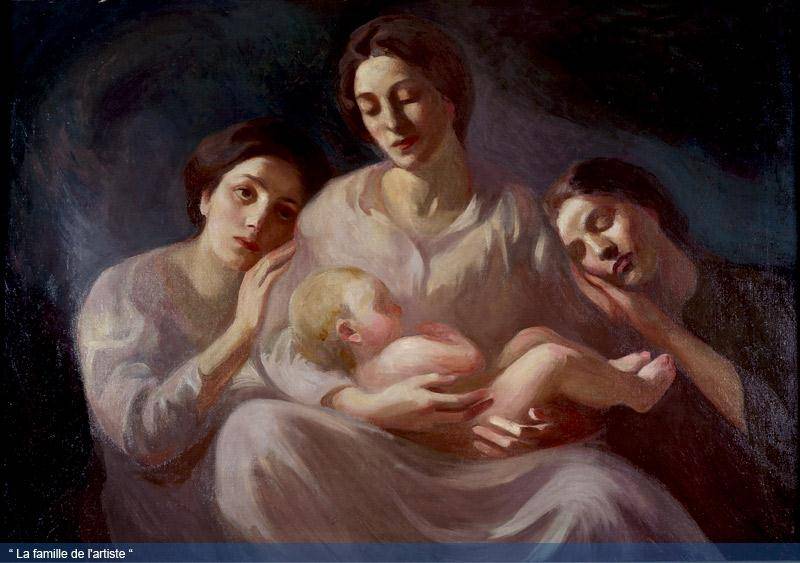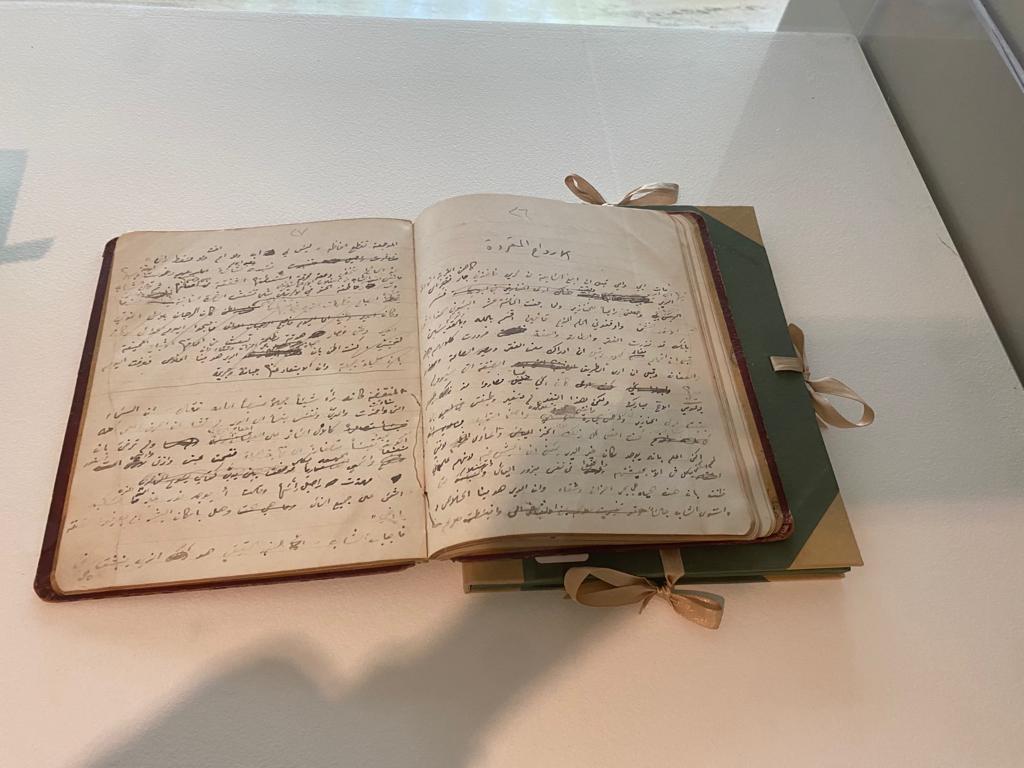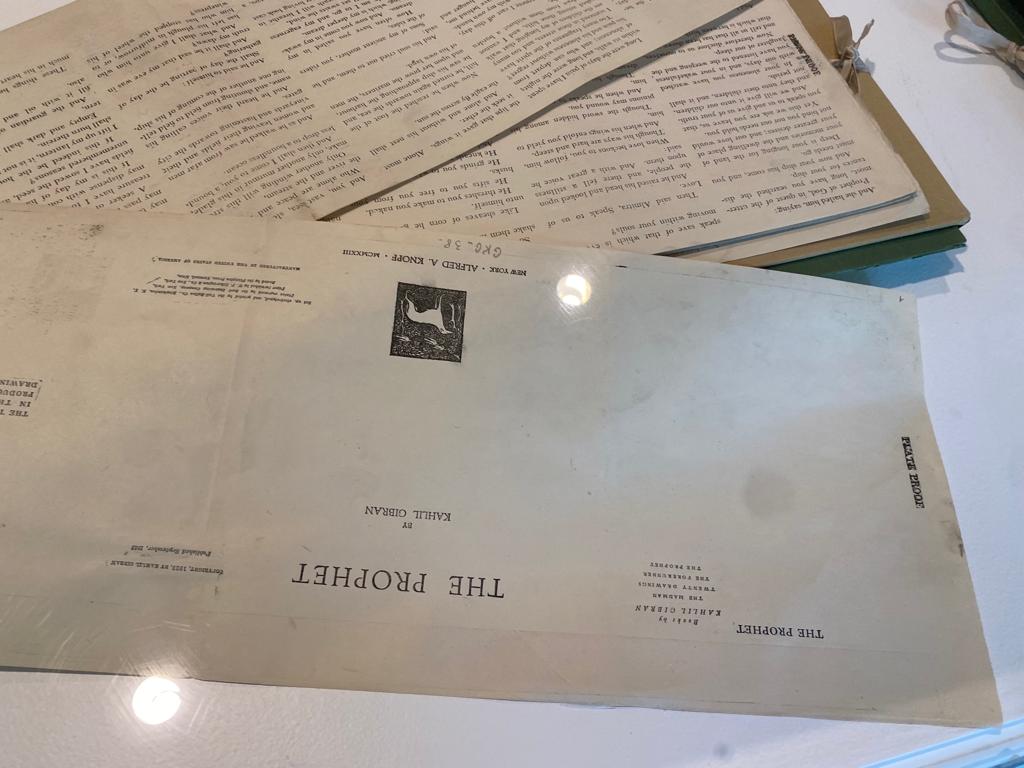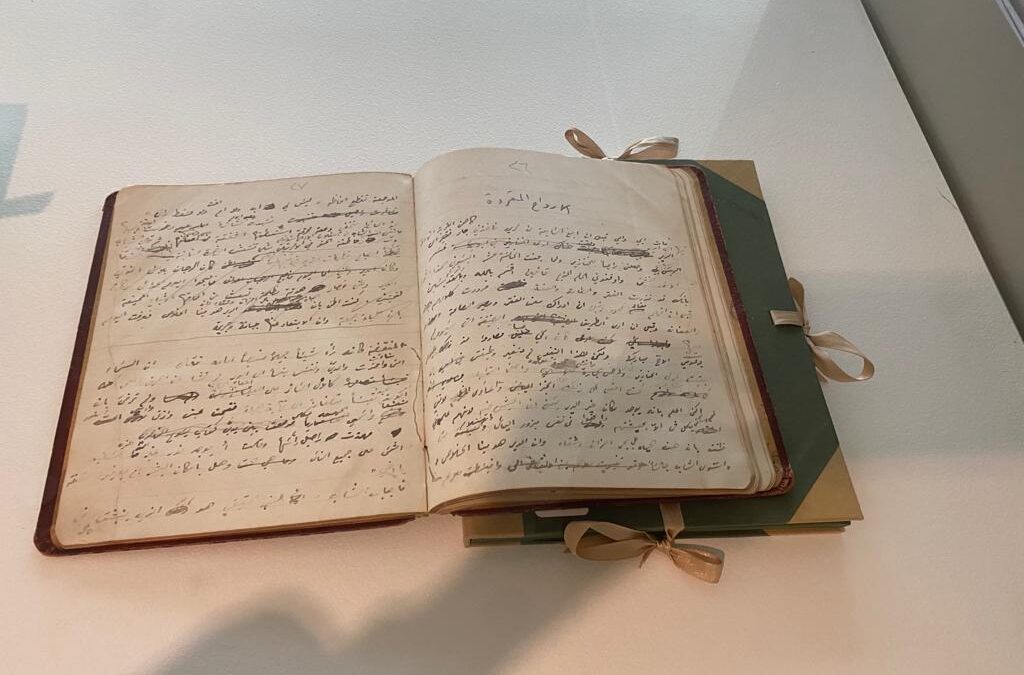The exhibition contains 30 works of art and the very first edition of the Lebanese poet’s literary masterpiece, The Prophet.

“Khalil Gibran returns to New York after 100 years.” This is the theme of a three-day exhibition held at the Glass Palace at the United Nations headquarters in New York City.
This exhibition brings together around 30 artworks, oil paintings, watercolors and charcoal drawings. It also includes the first edition of Gibran Khalil Gibran’s literary masterpiece, The Prophet, livened up with 12 of the book’s original paintings by the author, as well as his manuscripts, tools and brushes, seven notebooks and manuscripts.
All these artworks were brought from the Museum of Gibran in Bsharri, North Lebanon. It is a brief glimpse of the works of the internationally renowned Lebanese-American poet and painter.

Sponsored by the University of Balamand in collaboration with the Lebanese University, the World Lebanese Cultural Union – US Council, and the Gibran Museum in Bsharri and under the auspices of the Permanent Mission of Lebanon to the UN headquarters. However, “this exhibition in the UN premises does not imply the approval of the UN,” the institution clearly stated.
The Prophet: A universal message of peace
The works of Khalil Gibran as a poet, writer and painter revolve around family, marriage, women, nature, love and religion.
The Prophet, a book of 26 poetic fables written in English and published in 1923, is his most famous masterpiece— leaving an impression on many generations.
The exhibition features parts of this work in a glass display case. Another display houses his manuscripts, notebooks, and tools and brushes.
Gibran Khalil Gibran died at the age of 48 on April 10, 1931, in New York. The author directed that, upon his death, the royalties and copyright on his material revert to his hometown of Bsharri, Lebanon.
The Gibran National Committee (GNC) in Bsharri — which manages the Gibran Museum, founded in 1935 — is a non-profit organization holding exclusive rights to manage the copyright on his literary and artistic works.
‘Style and ideas are one and the same’
The works on display at the Glass Palace are significant. They reflect the symbolist pictorial trend of the early 20th century. The themes are centered on nature, women, and children, love and family. Some of the paintings are signed and dated, others are not.
Some of the works on display are accompanied by personal reflections and impressions that Gibran Khalil Gibran described in his extensive correspondence with his friend, Marie Elizabeth Haskell, and her husband.
Gibran met Haskell in Boston, and she later became a protector and a friend who backed him financially. In 1908, thanks to her support, he moved to Paris to study art. In the City of Light, he studied with Auguste Rodin.
After Gibran’s death, Haskell bought the Mar Sarkis monastery in Lebanon to bury him.Gibran also bequeathed her his studio in his will.It is interesting to read the notes that accompany some of the visual works displayed on the UN’s walls. Autumn, a signed and dated oil painting, was shown at the 1909 Spring Salon at the Grand Palais in Paris.
“The opening of the Salon was a great event. I have never seen such a crowd in my life, nor seen such enthusiasm,” he wrote to Haskell on May 10, 1909. “Most French newspapers mentioned my name along with other artists I would have liked to have as teachers. Autumn looks rather pretty on the wonderful walls of the Grand Palais.” Women and nature have a special significance for this painter. Woman in Nature is an unsigned painting dated to 1914. The painter described his vision as follows:
“What profit is there in imitating nature when it is open and so accessible to all who see and hear? The work of art is rather to understand nature and to reveal its meanings to those who cannot understand … The mission of art is to bring out the unknown from the most familiar.”
On Woman Discovering Nature, a 1912 oil painting, he wrote to Haskell: “It is difficult to separate style from subject. What a man wants to say determines how he says it. If he has a vision of life, he always presents that vision to us in different forms. We unconsciously contradict ourselves when we say that we like a man’s style and not his ideas. Style and ideas are one and the same.”

As for the charcoal work, Four Sides (1915), Gibran states in his correspondence to Haskell: “The only way to work is to do everything with the best that is in you. With the deepest heart and with the eyes that are the fountain of tears … If there is anything in my work that attracts people, it is probably that something that speaks of the loneliness in all of us.”
Art and poetry were a spiritual exercise for Gibran— a bridge between matter and spirit, a means of raising man to divine knowledge.
“Art is a step from nature to the Infinite,” he wrote.
Pictorial art is the contemplation of human beauty, the manifestation of sensible perfection, perceived in its nakedness — the nude being practically the only subject in Gibran’s painting — proof of the immanent reality of the Creator present in his creatures.
This article was originally published in French in L’Orient-Le Jour. Translation by Joelle El Khoury.




